Krystee’s Obsidian Tumbling Tutorial
Preface: This multi-process (rotary and vibe) tumbling tutorial was originally published as a .PDF file in 2012 by RTH member Krystee (username: tntMom) and has been referred to many times as a trusted tutorial recipe for achieving outstanding polishing results on what is arguably one of the most difficult materials in the lapidary hobby. The original link to the .PDF was lost to server changes several times before it was rescued and hosted here for you to enjoy on www.RockTumbling.com, home of the Rock Tumbling Hobby forum. Some minor content editing and formatting changes have occurred in order to fit the format of this page.
Definition of Obsidian from Wikipedia:
Obsidian is a naturally occurring volcanic glass formed when lava extruded from a volcano cools rapidly with minimal crystal growth. It is an igneous rock. Obsidian is produced from felsic lava, rich in the lighter elements such as silicon, oxygen, aluminium, sodium, and potassium. It is commonly found within the margins of rhyolitic lava flows known as obsidian flows. These flows have a high content of silica, giving them a high viscosity. The high viscosity inhibits diffusion of atoms through the lava, which inhibits the first step (nucleation) in the formation of mineral crystals. Together with rapid cooling, this results in a natural glass forming from the lava. Obsidian is hard, brittle, and amorphous; it therefore fractures with sharp edges. In the past, it was used to manufacture cutting and piercing tools, and it has been used experimentally as surgical scalpel blades.
For this presentation I am using Midnight Lace Obsidian from Oregon. Obsidian is natural volcanic glass and in the lapidary hobbies it is considered to be a soft stone with a Mohs hardness of 5-6 (wiki).
Rough rock as it appeared before tumbling:
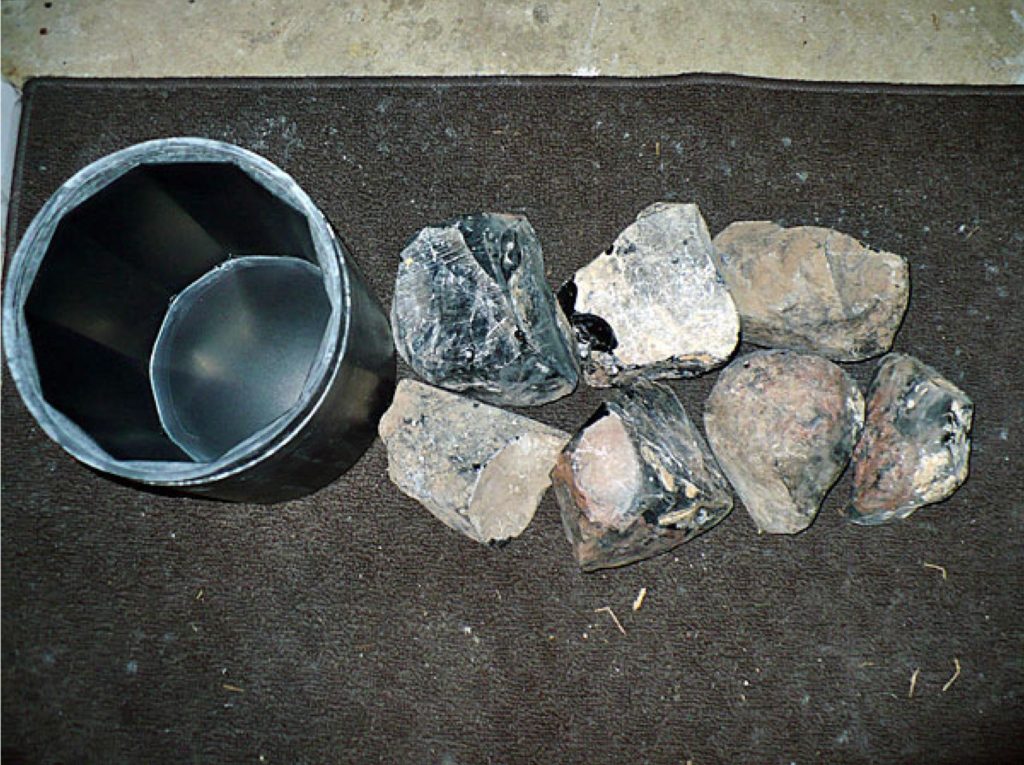
Step 1.
I break up the rock with a chisel and a hammer. It is very important to wear good eye protection when
breaking any rock, especially obsidian. Obsidian is very sharp. Use extreme caution when handling the
freshly broken pieces as obsidian is one of the sharpest materials known to man.
I use a Lortone rotary rock tumbler for the “rough grind” stage.
- Fill the barrel 2/3 full of obsidian pieces. It is important to use a variety of different sizes to
ensure maximum surface contact.
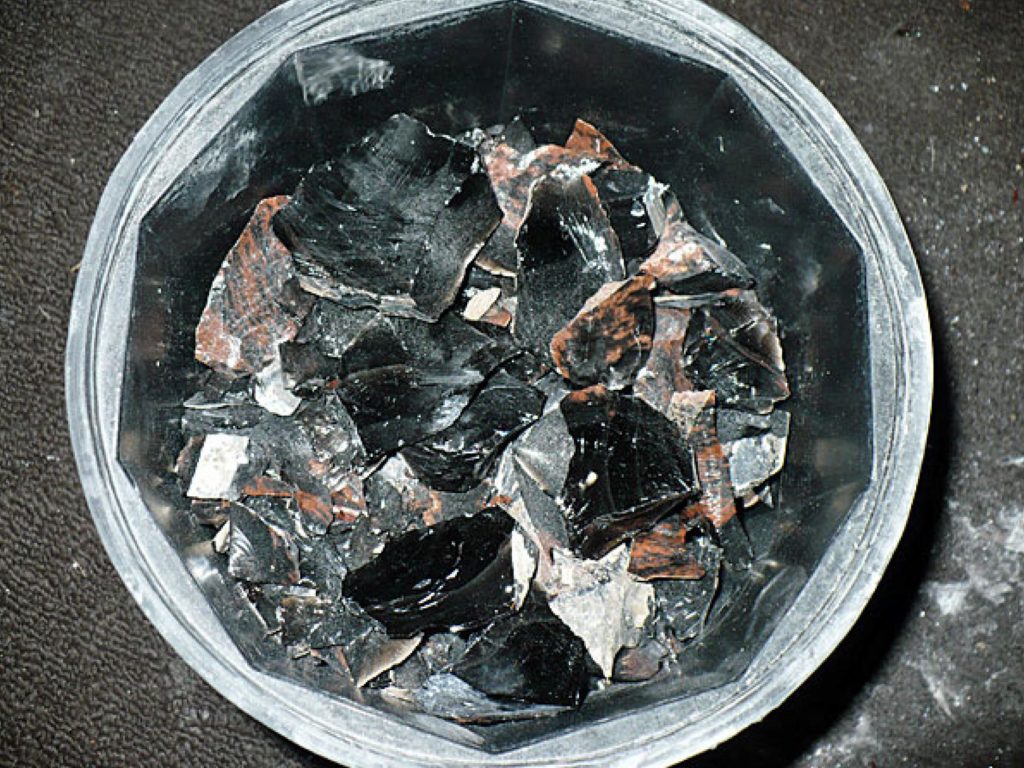
- Add water to just under the top layer of rocks. You just want to barely see the water through
the rocks. - Add 60/90 or graded 80 Silicon Carbide grit. In a 3lb barrel I use 4Tbs. In a 12lb barrel I use 1.25
cups. Recently a very experienced tumbler friend of mine told me that she uses 1Tb per lb and
gets the exact same results. My next run in rough will be with less grit to see if I can save money
on grit and achieve the same results!
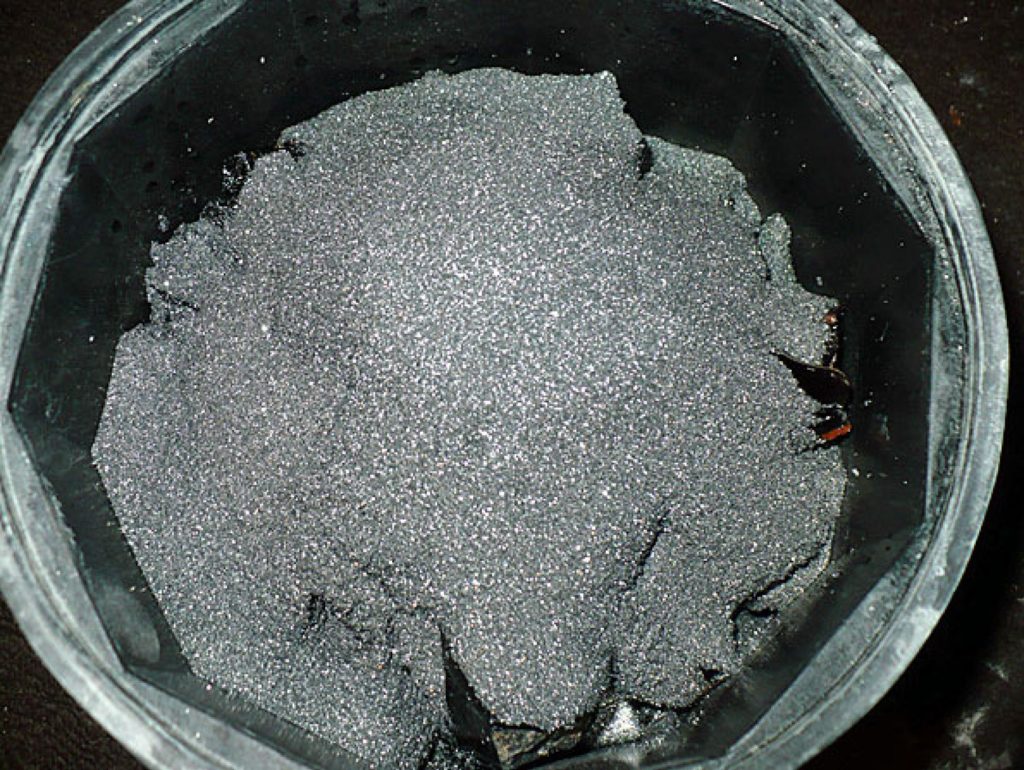
- Run and leave it alone for 10 days (it’s ok to open and check it whenever you want, just don’t rinse and go to the next stage just yet…). Check the back of the barrel every day to make sure it is not bulging out. If it is, then remove the lid and burp the barrel. Sometimes obsidian will “gas out”. If it goes unchecked you could potentially have an exploding barrel! It hasn’t happened to me but I know of people that it has happened to.
- After 10 days, remove some stones and look at them. If they are completely rounded and pit and crevice free then you can wash them and move on to the next step. If they still are pretty rough, or have pits and crevices, then add them back to the barrel. At this point look at your slurry. If your stones have broken down a lot and the slurry looks watery, then add more obsidian or ceramic media to the barrel to get it back to 2/3 full. Then recharge your barrel by adding more grit. I usually recharge the barrel with about 1/3 to a maximum of 1/2 the amount of grit that I started with. Then run another 10 days. Listen to it though… if it starts sounding too quiet then you might have a grit build up that is cementing your stones in place. Before you recharge, make sure you stir up everything that’s in the barrel so that nothing has settled in the bottom. It’s good to have a nice thick slurry as this helps cushion the fragile obsidian. However, if your slurry is so thick that your rocks aren’t tumbling then you can scoop some of the slurry out and replace with fresh water.
- I checked my barrel after 5 days and added some ceramic media to it as it had broken down a lot. I did not rinse, change the slurry or add grit! Now, at this point in the presentation I would like to bring up some critical factors. Obsidian is a difficult stone to polish. That being said, it is ABSOLUTELY ESSENTIAL that you do not move on to the next step if there are any large pits or crevices! One little tiny piece of grit that gets lodged in a pit or crevice will contaminate the entire barrel in the next step! Oftentimes it will take a month or more in the rough grind to get a perfectly smooth stone! If you are impatient, like me, and have the equipment available to do this, then I have a shortcut I would like to share with you!!!
Shortcut:
After 10 days I rinse out the barrel. NEVER rinse your rocks into a household drain! The slurry from the tumble will completely clog up and destroy your home’s plumbing!!! Always rinse the rocks outside! I then separate the almost good stones with minor pits from the really heavily pitted ones. The ones with a lot of pits go back into the next rough grind.
Here is my rough after 10 days (WET):
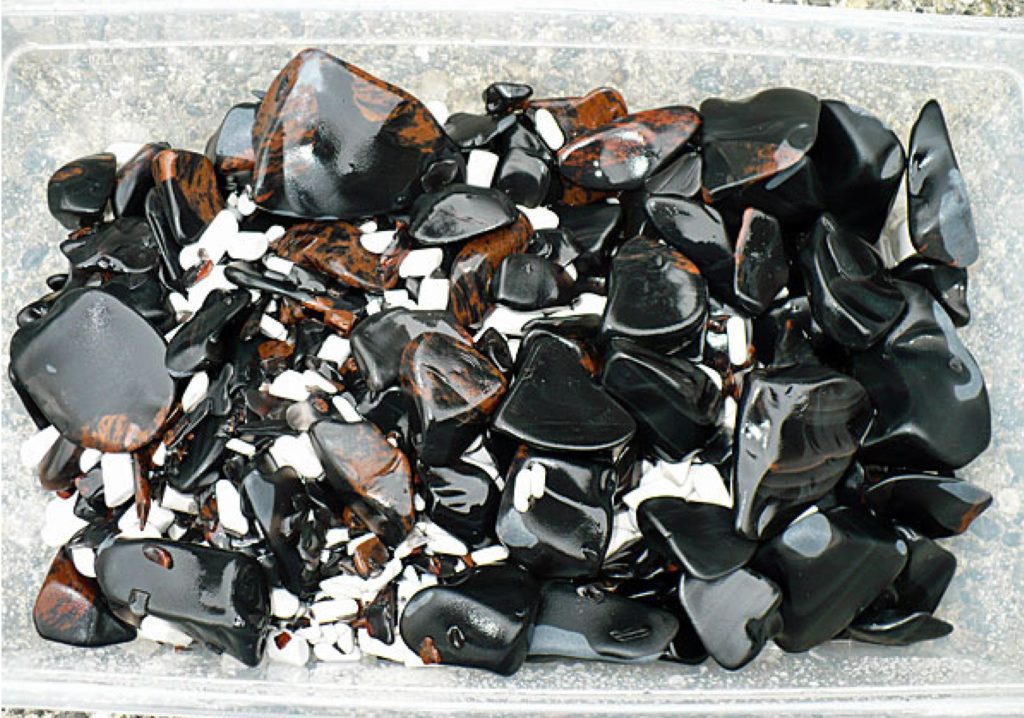
As you can see there is still quite a bit of divots, pits etc and they are not completely rounded yet… That’s OK for the shortcut! If you are not doing the shortcut then all of these need to go back into the rotary for another 10+ days!
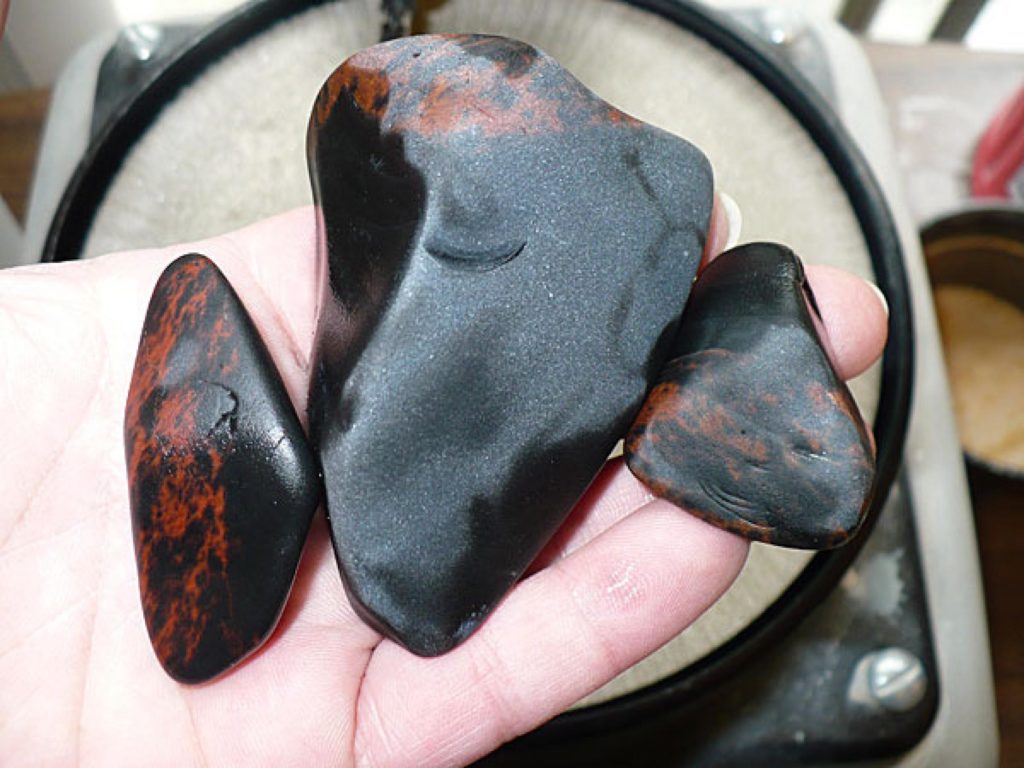
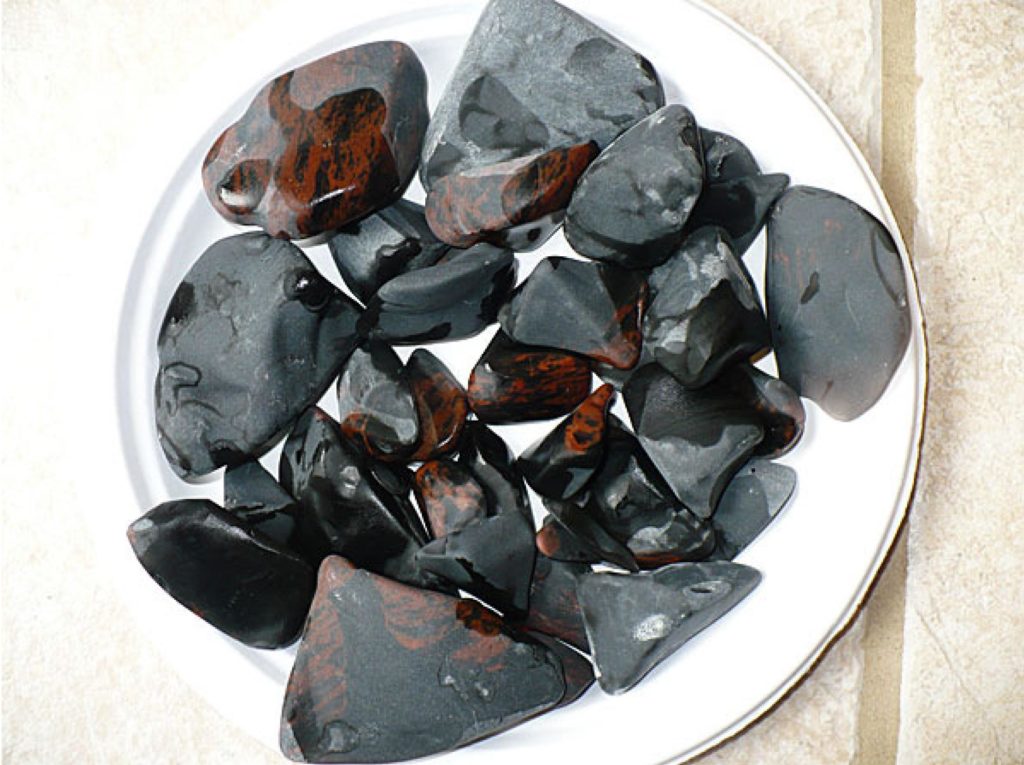
Ok, so now we have a bunch of rocks that are shaped up nicely enough but not exactly perfect. I take these stones over to my rotating flat lap. I use 180 grit diamond disk on it. I have also used a 100 grit diamond disk but you have to have a light touch or the obsidian will chip. Any coarser disk will chip the obsidian. If you are using wheels then I would probably recommend a 220. I then grind out any remaining pits or crevices. Doing this can save you up to a month of tumbling and the cost of grit!
Here is what it should look like “After doing the shortcut”, if you take the time to tumble them correctly then the surface should look like this but the stone will be MUCH MORE ROUNDED!
Shown WET after 60/90 with the pits and crevices ground out on the lap (180 diamond disk), notice that there are a lot of scratches even when shown wet:

Step 2:
For the rest of my tumbling I use a Lot-O Vibrating Tumbler. This tumbler ROCKS! It can do, in a day, what takes a rotary a week or more to accomplish. It also is very gentle on the stones. This tumbler does not work for the rough grind however, because it does not round out and shape stones the way a rotary does. This tumbler has to be mounted on a heavy surface to work properly. Mine is glued down on 80lbs of cement blocks. I primed the cement by painting it.
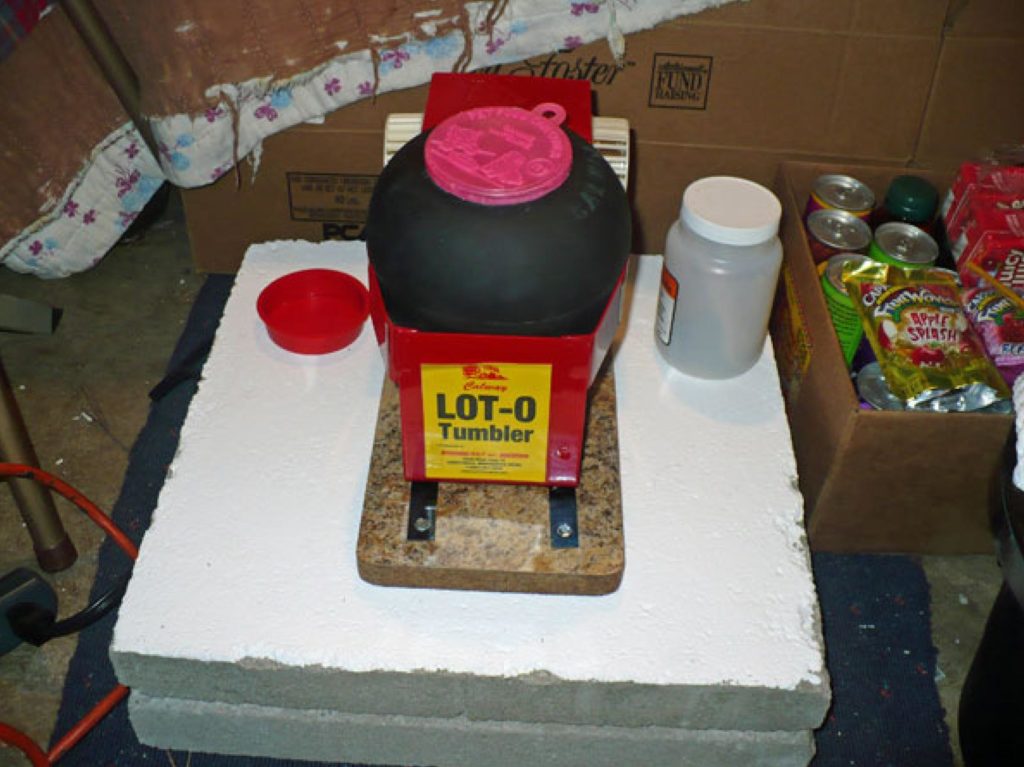
From this point on I use ceramic media as a cushioning agent for my obsidian. It’s very important to use cushioning for the rest of the stages to prevent chipping. Most rock shops that sell grit will also carry ceramic media. I use a mixture of large and small media. I have also heard of several people that use ceramic tile spacers from Home Depot with good results. You do not want to use plastic pellets in a vibrating tumbler. They are not heavy enough and will impair the functionality of the vibration process.
One nice thing about ceramic media is that it can be rinsed and moved along with your stones in every stage. You DO NOT need to have dedicated media for each grit stage!
Ceramic Media:
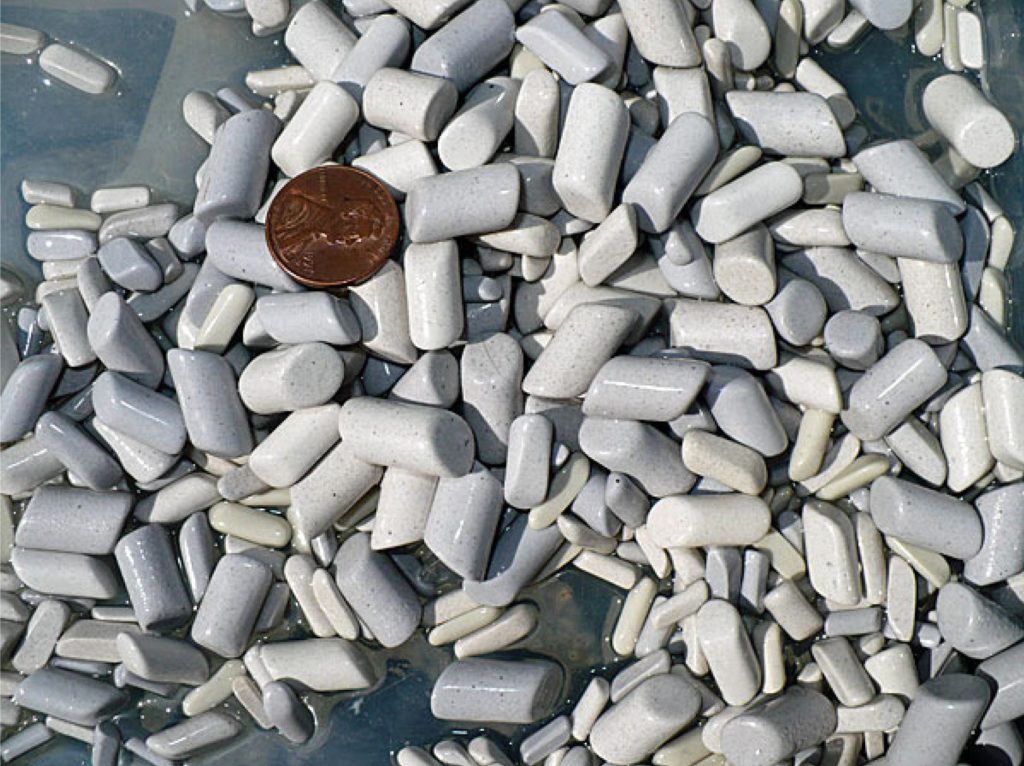
- Fill the barrel half full of ceramic media. Then add obsidian up to the top of the barrel.
- Next, add 1 Tablespoon of Borax. Trust me on this! Borax will burnish while tumbling and give you a much smoother finish! It also thickens up the slurry to provide a more gentle rotation of the stones. Borax can be found at any grocery store. One thing you need to know about Borax though, is that it will kill grass and plants, so be careful where you dump your slurry! If you are worried about this then I have heard about other products that supposedly produce the same results. A bar of Ivory soap, MUST be Ivory, and then grate it with a cheese grater and use in place of Borax. I have also heard of Dreft Powdered Laundry soap being used in place of Borax. I have not tried either of these alternative methods but I have some friends that swear by it.
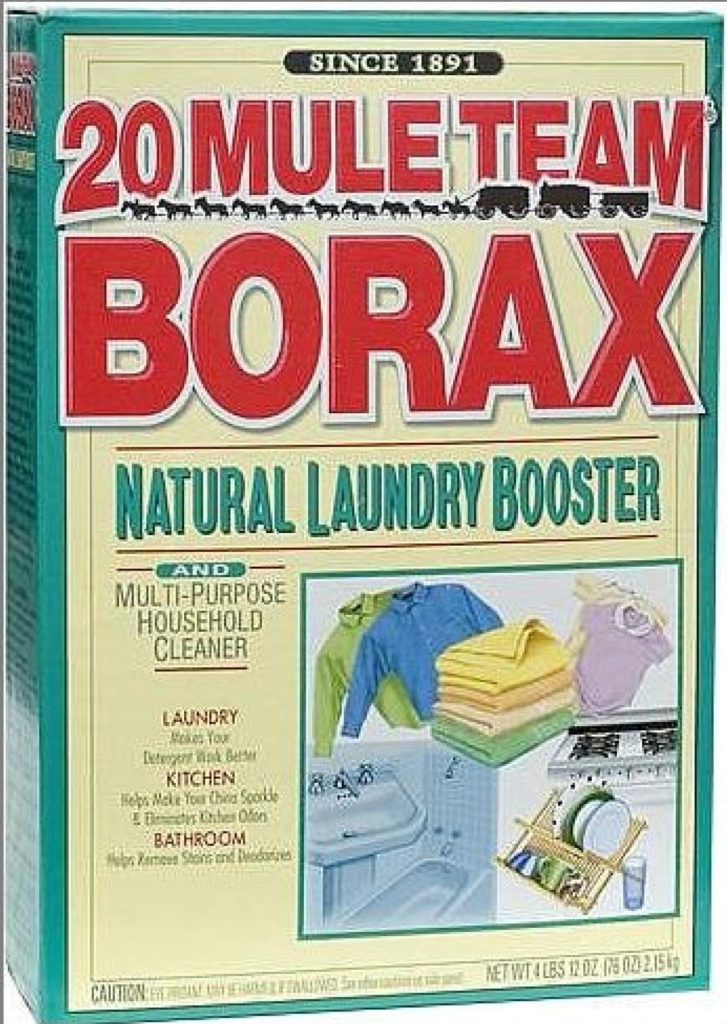
- Add 3 teaspoons of graded #220 Silicon Carbide grit.
- Get a spray bottle and fill it with water. Spray three or four sprays of water into the barrel. You
want the barrel barely wet.
Picture of it starting up after running for a minute:
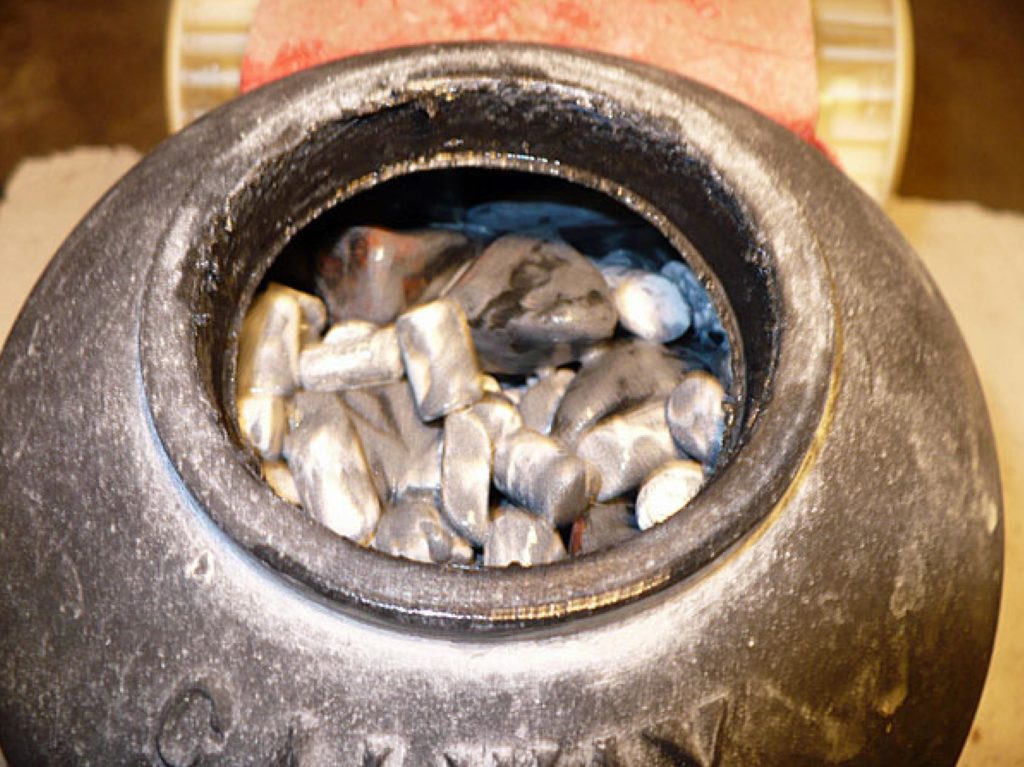
- Turn on the machine and run for a full 48 hours. Check two or three times a day. When the
slurry gets too thick the rotation will slow down a lot. Just spray a couple sprays of water in it to
get it moving well again. - I would like to explain something important right now regarding tumbling with a vibratory
tumbler. In a vibe, grit breaks down in half every 24 hours. So, this first run of #220 becomes 440 in 24 hours, and #880 at the end of 48 hours. After I wash the stones and move to #500, I am essentially backing up a little bit. This is a good thing and it affects the finish! - At the end of 48 hours add a squirt of Dawn dish washing soap to the barrel and a few sprays of water. Run for 15 minutes. This is basically a pre-wash and helps clean the stones.
- Then rinse your stones and ceramics thoroughly and wash out the barrel.
This is what the surface should look like after 48 hours in #220. *Note- This picture, along with the rest of the pictures in this tutorial, are taken DRY. It is important to see what the surface of the stone should look like after each stage:
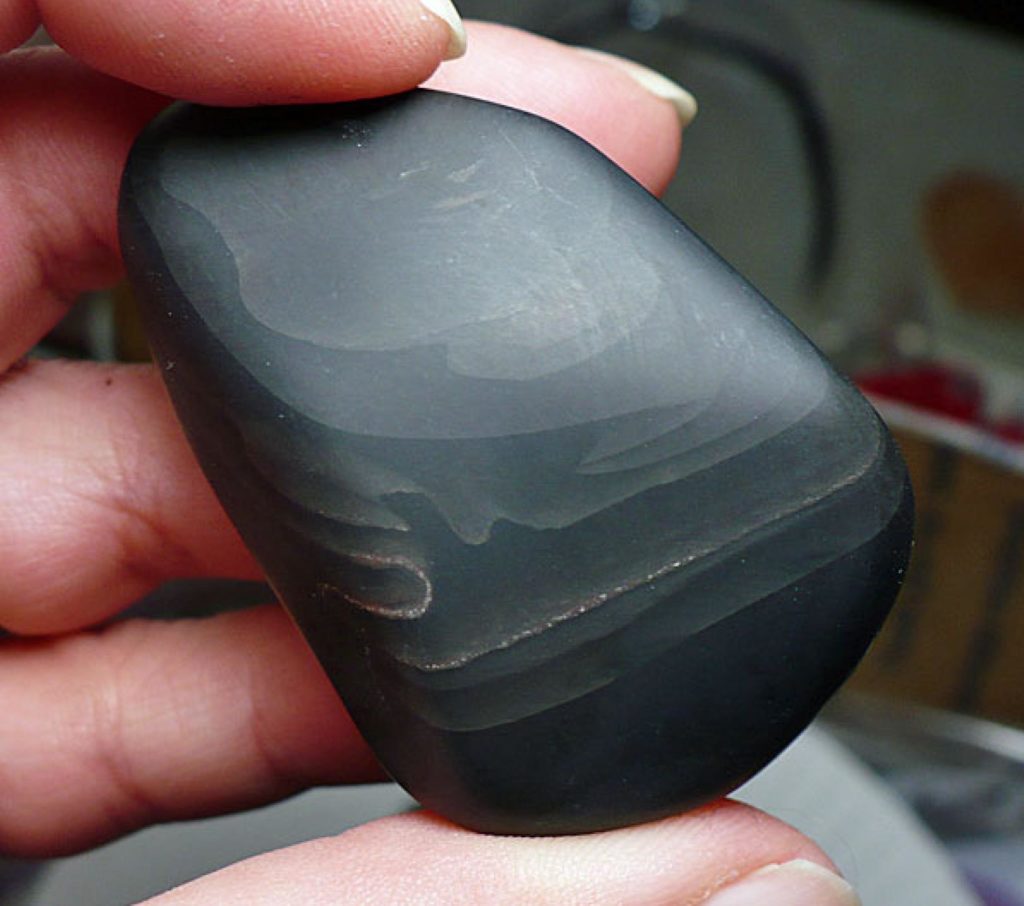
Step 3.
- Put your washed ceramics and stones back into the barrel. You will be doing the exact same process as Step 2, except this time add ½ teaspoon of #500 Aluminum Oxide as your grit. The surface of the stones will not be breaking down much like they did in the last step, so you probably only need a squirt or two of water per day. By Day 2, you probably do not need to add any more water. It kind of depends on how much Borax you added to the barrel as to whether it gets too thick.
- This time run it for 4 days! Day 1 = 500, Day 2 = 1000, Day 3 = 2000, Day 4 = 4000
24 hours #500 DRY:
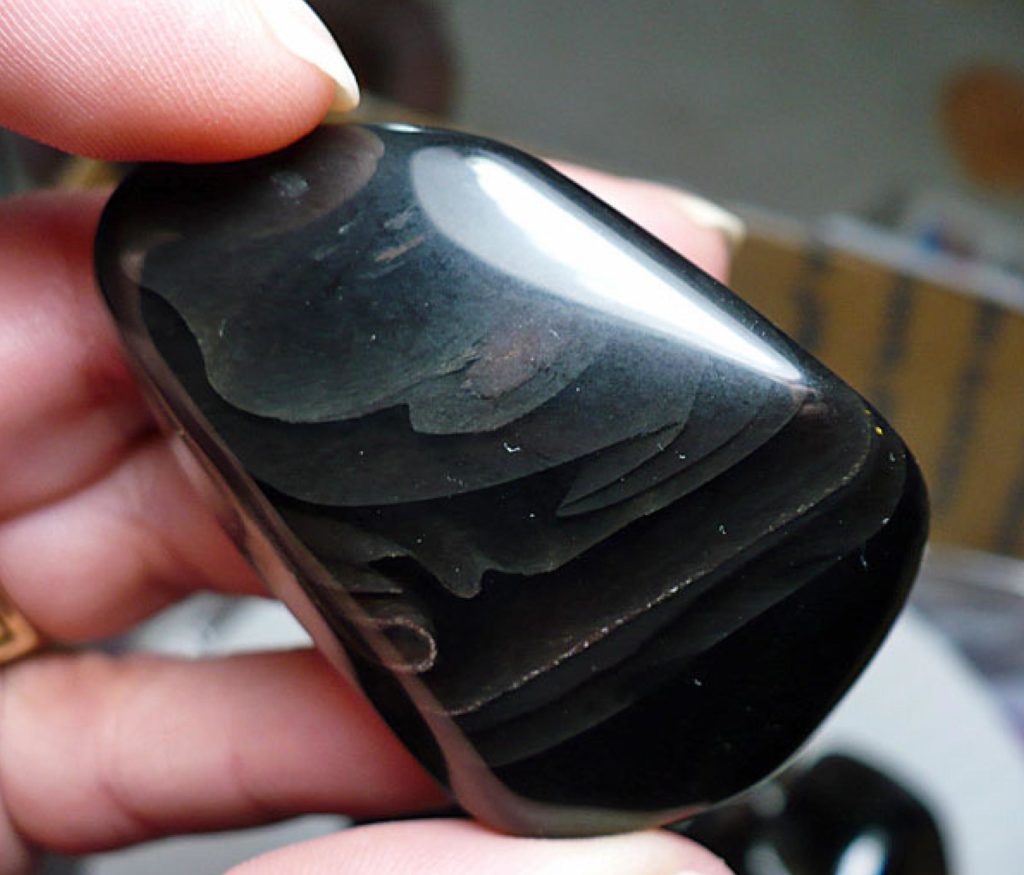
48 hours #500 DRY. It is starting to get shiny and I am beginning to see a reflection!:
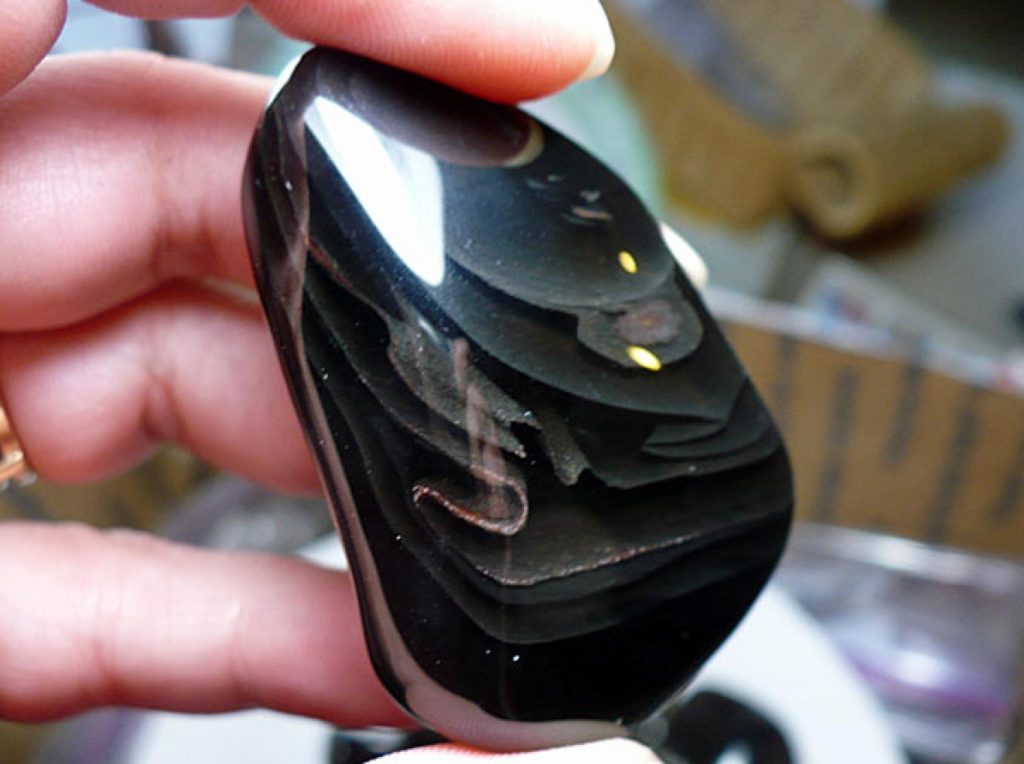
72 hours #500 DRY:
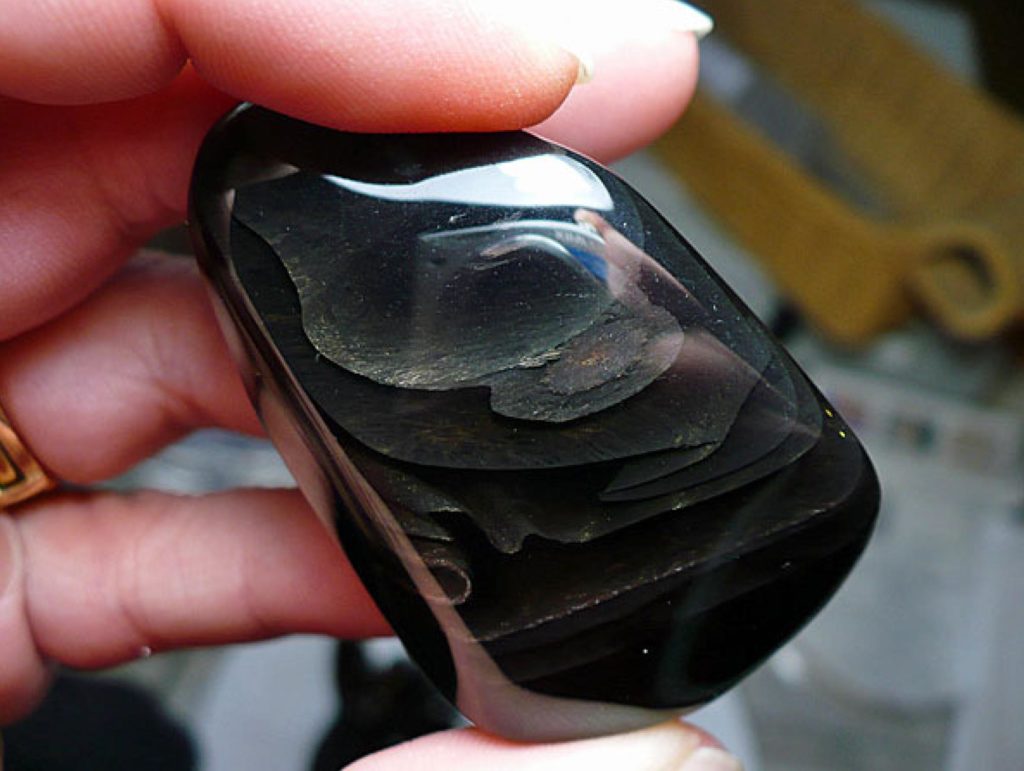
96 hours #500 DRY (it is very hard to see a difference in the surface with photographs at this point, if
you focus on the reflection of the light bulb though, you will see a difference in each progression
picture):
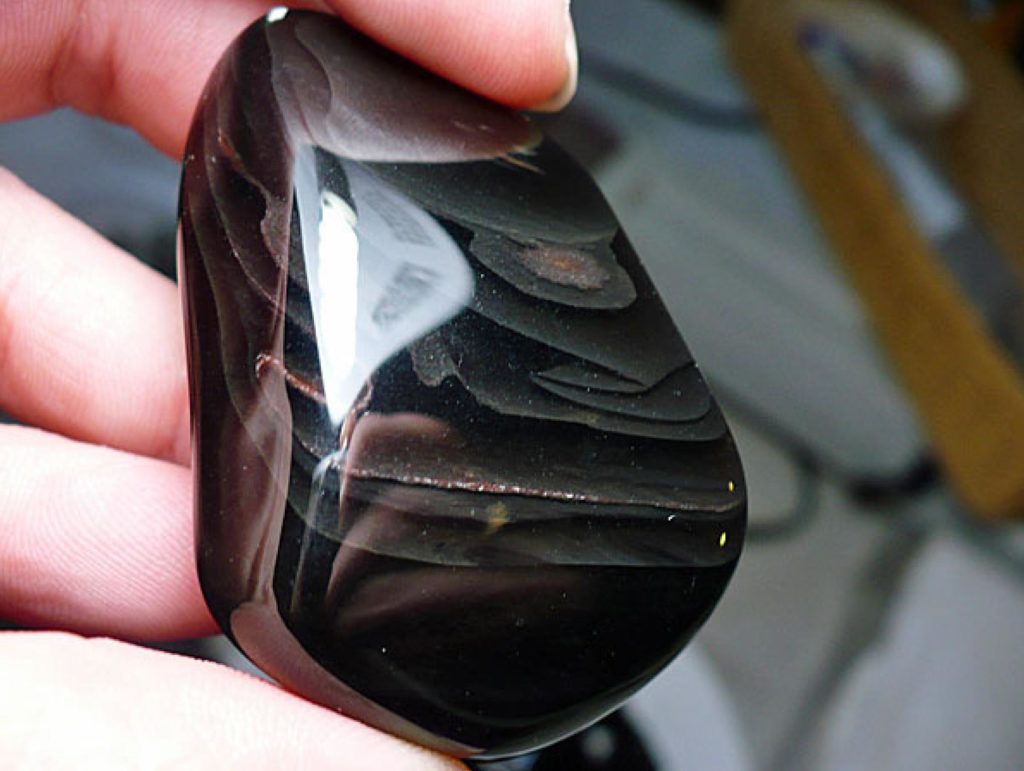
- At this point you should see an almost mirror reflection in your obsidian. If you don’t, then keep running it for another day or two. Wash the same as in Step 2. Time for polish.
Step 4.
- Put your washed ceramics and stones back into the barrel. You will be doing the exact same process as Step 2 and 3, except this time add ½ teaspoon of Aluminum Oxide Polish or Cerium Oxide Polish. The polish I used is called OMG2 and it is a Super AL OX polish that I buy from JSGemLapidary.com (editor’s note: John is no longer in business – let us know on the forum if you have a reliable source for this product). It is a super fine aluminum oxide polish that is a .3 micron developed especially for vibrating tumblers.
- Run for 24 hours or more (I do 3 days!), wash up and admire your obsidian!
The shine after polish (you can now see the reflection clearly):
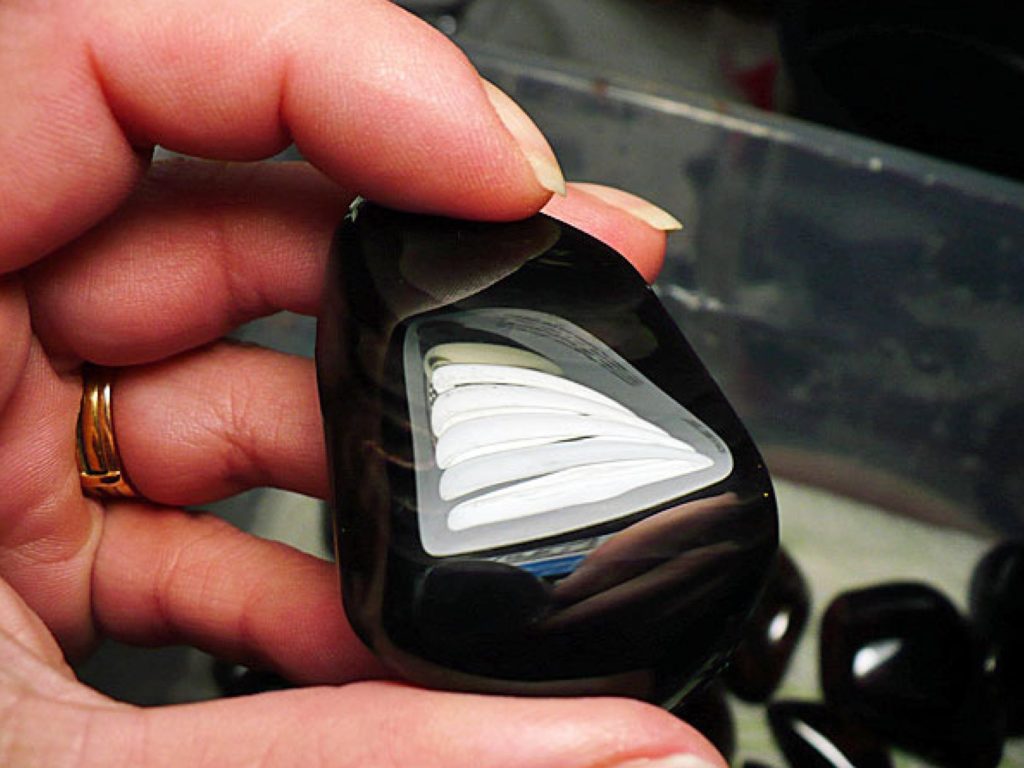
The whole batch minus the stones I pulled from each stage for a club presentation. Pulled stones were replaced with ceramics:
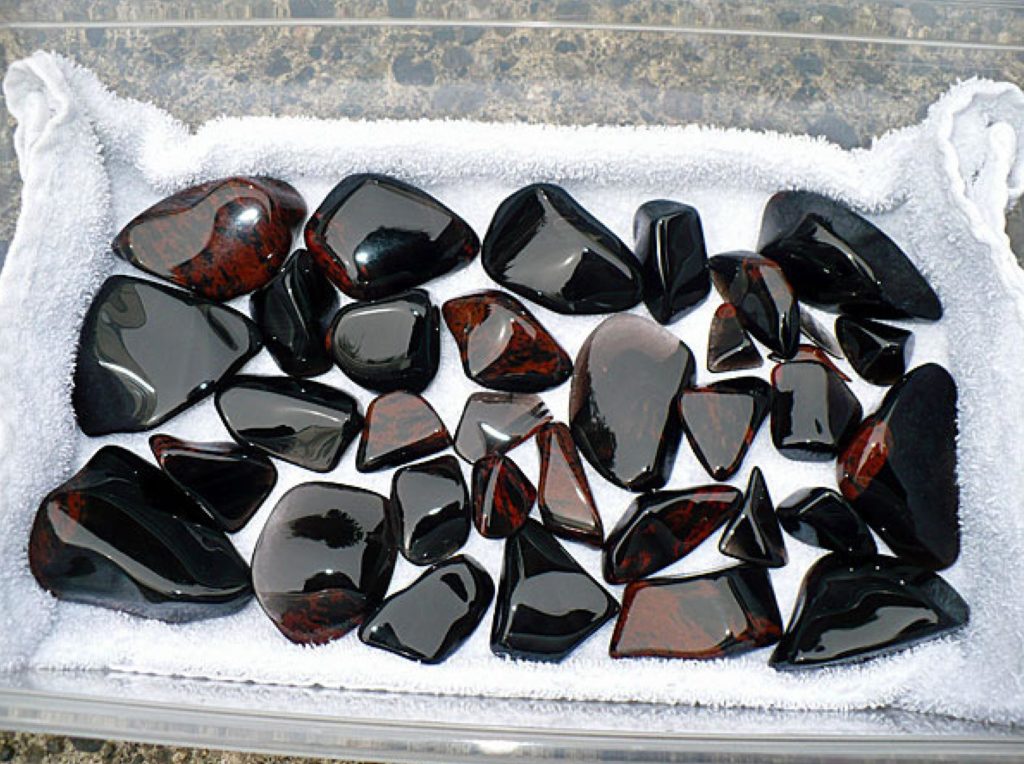
Thank you for taking some of your time to look at some of mine!
~Krystee Gniot
